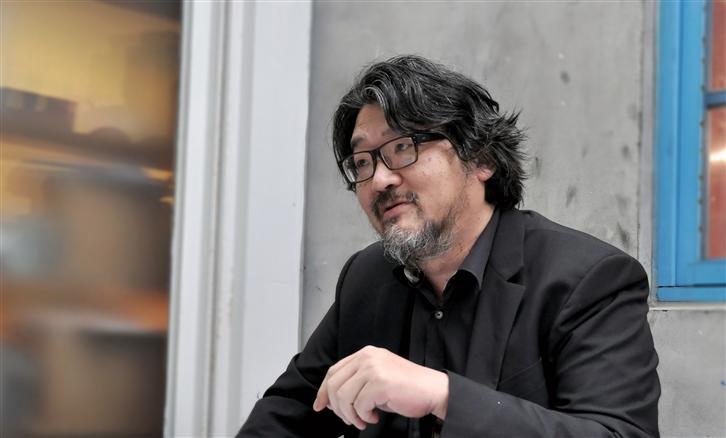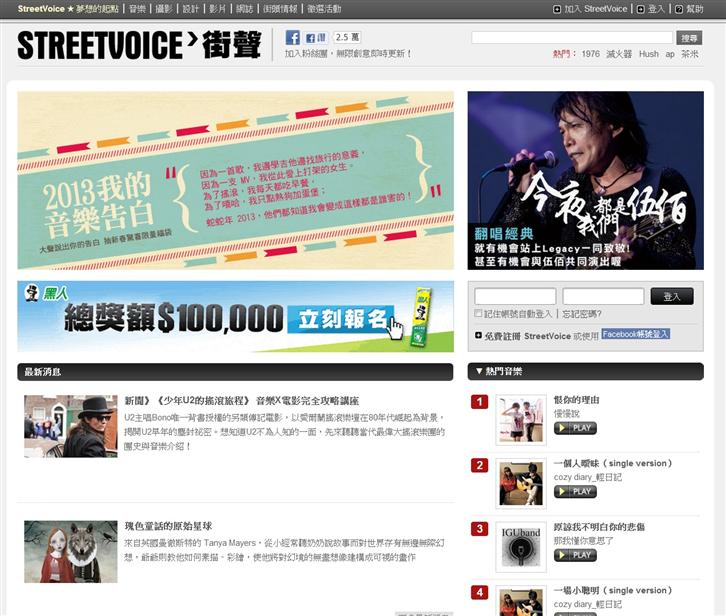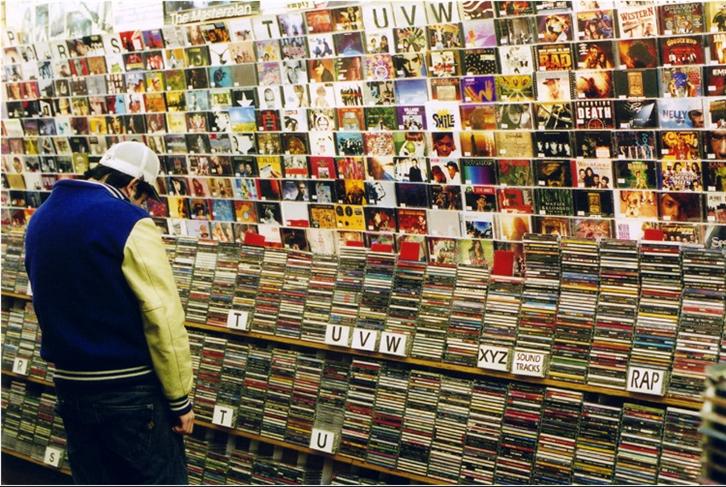
From the local based Simple Market, the Hua-shan concert venue legacy, to the biannual Simple Life Festival… these events all promote the same cause: Creating innovation culture. StreetVoice and other platforms now allow you to virtually experience stories and projects of such. Whether it is a reminiscence of the past or the birth of the present, the clashes that technology brought was to no means just superficial impact. Today, G!Voice invites CEO of Neutron Culture and legendary music producer Landy Chang, to talk to us about the clash of technology and cultural art!
Technology– Opening the Doors to Art
G! VOICE: From taking Italian gondolas and turning them into market dynamic, to promoting a self-image with the London underground… These are all examples of connecting daily culture to edgy innovation. How do you think technology can improve both aspects?
Landy: I interpret culture as the psychology and behaviorism of society within a certain time period. The mode of living from the past still might be preserved in the present, if it is something close to heart. My job is to pay attention to the ways contemporary culture is presented through creative art.
The first impact of technology that leads to a cultural paradigm shift is the Internet. This platform literally changed our ways of daily life. In the past, information circulated much slower. The market was less complex and more diverse. The Internet allows young people to really “see” what’s out there, and with that came the desire to “create”. With better gadgets becoming ever more affordable, such resources become a must for innovative projects. That is to say, the competition is much more dynamic as well. As contemporary artists, we saw this coming for a long time: and we need to react by modifying our modes of designing art, too. There will be an explosion of artists, designers and entrepreneurs coming your way, each with their own edge!Life creates culture; Technology enriches culture
G! VOICE: On StreetVoice’s official site, it states that “Every spark that generates a cultural movement starts from a young mind’s creativity, and its actualization”. This provides a clear insight on the relationship between culture and innovation. What role does technology play, though?
Landy: In 2006 we hosted a “Tai-ke” rock concert that integrated themes like poll-dancing and “Din-tao” arts troupe as a means to unite traditional elements and rock ‘n roll. You can say that rock, hip-hop, jazz or R&B… these are not just music genres. They are life styles, a kind of attitude that young people turned to when their creative minds were not financially sponsored with social encouragement. The punk culture in UK Manchester, the hip-hop from New York etc… these are all examples how art and culture go hand-in-hand to influence the world.

▲The 2006 “Tai-ke” Rock Concert was a blast.
Yet the most important aspect is innovation. Without new ideas, there is nothing to build on. And we all know that it is not easy for a young person to make way in any market. StreetVoice then serves as a platform for people like this. This is a space that allows struggling artists to voice themselves and converse with others like them. Once you gain popularity, the “fandom” will coming rolling in! Start slow and grow steadily. That is the only way to develop ideas into a well-rounded project. We take what technology offers us, and use it to connect fans and audience from different corners of the world. That is what we do. I believe that the relationship between the artist and the audience is much more relevant nowadays. The marketing corporations merely function as a mediator between the two, and the real business is made directly from the creator to the consumer. This is exactly what StreeVoice aims for.

▲StreetVoice official site
Technology– Deconstructing and reconstructing Art
G! VOICE: It seems that technology has allowed the creator to directly interact with the consumer! Landy: Without doubt! Technologies change a lot of things. Take the record business for example. It has become one of the peak businesses in the last century. Technology has completely broken the chain of producing-marketing-publishing. Although technology benefits art, but the damage it causes is also impossible to ignore! The birth of MP3, for example. Record companies face their first crisis, in which the whole industry was rumored to go down. MP3 stood for a free and more convenient way of appreciating music, and users get to really choose only what they want to hear. It diluted music listeners into the vast sea of endless choices; with it, products such as tangible albums, simply died.
For the music industry, the media was the platform of choice. This clearly would not work now. We have to go back to the music (band) itself, and gain exposure through “micromarketing”: like viral videos and mini-concerts. The result of technology is that everything becomes its own individual, and needs to voice itself. No one visits the record store anymore. Most just access to music through the Internet; therefore the artist needs to know how to reach out to the listeners actively. You can say that technology destroyed the industry in order to rebuild it. It deconstructed music appreciation as we know it, and re-defined the value of such. These are the kind of challenges that we need to tackle and adapt to!

▲Record stores are vanishing from the market now.
However, no matter how technology evolves, it still represents the same thing, from a cultural perspective. For example, Vivienne Westwood’s punk inspired collection line. It is necessary to reach across boundaries and form new alliances with the unfamiliar. The only difference technology makes is to the vehicles by which we present it. In this industry, it is crucial that we understand the need to take newer approaches for making music. There are many other platforms besides iPad, but of course the essence of music remains the same, with a different presentation.
Source:
http: //tw. streetvoice. com/
http: //browse. deviantart. com/? offset=936#/daawfg
